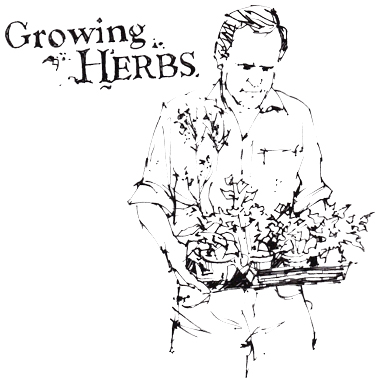 The months are whizzing by already and British summer time has begun. It's not too late to start sowing culinary herbs. I seized an hour out of my already crammed day, because an hour here and there is all you need to start sowing your herb seeds. As I said earlier this year, if you love cooking, you can't do without a constant supply of fresh herbs to enhance and enliven even the simplest dish.
The months are whizzing by already and British summer time has begun. It's not too late to start sowing culinary herbs. I seized an hour out of my already crammed day, because an hour here and there is all you need to start sowing your herb seeds. As I said earlier this year, if you love cooking, you can't do without a constant supply of fresh herbs to enhance and enliven even the simplest dish.
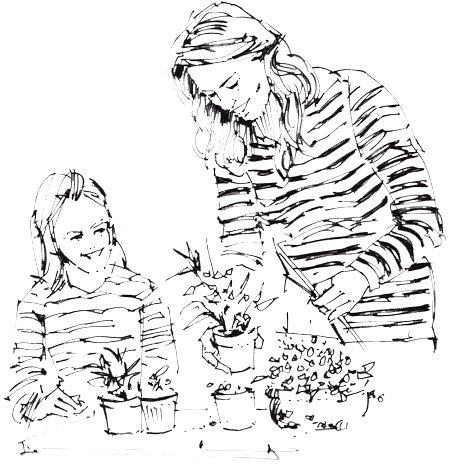
Like you, I've no time to be precious about it, so I'm using my saved plastic meat or mushroom trays to sow my seeds in. Some of the trays last quite a few seasons if I've not left them out in the sun too long. Make sure, if you are being sensible or some may say cheap and you are reusing food trays, that you make drainage holes in the trays first. I use an old Philips screw driver, heated up on gas rings on my cooker, to melt the holes.
You can buy special compost to raise seedlings in or an all-round general purpose compost like John Innes is fine. I never sieve the compost first and I've always had success, but do if you have more time and you enjoy the correct route. Read the seed packet through for sowing times and depth.
The short guide below is a general outline of when which category of herb should be sown.
HALF-HARDY ANNUAL plants will grow, flower, go to seed and then diminish in one year. They are too tender to withstand winter conditions outside. For a continual fresh supply of these herbs, do as above, and sow at three week intervals.
Basil, a very versatile herb with a pungent aroma. There are many species of basil and it is used widely throughout Europe, the Mediterranean and Asia, the latter having a slight aniseed flavour. Basil is easy to grow from seed, but is too tender to take low temperatures. Probably the most well known recipe using basil is Pesto, which combines the leaves with parmesan cheese, olive oil and pine nuts ground down to a loose paste. Pesto can be used with pasta, spread over meat or just spread on to fresh bread.
Some types of Coriander are also classed as HH Annuals too.
Nasturtium, well this is actually an edible flower like marigolds, it's easy to propagate and grows well in poorer soil and containers. With its fiery coloured blooms drifting from brilliant yellow to a deep orangey red, nasturtiums will creep around your outdoor kitchen like the smouldering fire in your oven. Its leaves can be added to salads and will bring heat hotter than rocket. You can start the seeds indoors 4 to 6 weeks before the last spring frost or sow seeds in early spring into moist, well-drained soil in full sun or partial shade, but your blooms will not be as abundant as full sun. If you grow nasturtiums in pots you may have to prune them back to keep them tidy. With all plants, regular beheading (dead heading, but you need the head in this case before it wilts) and harvesting of foliage keeps the plant from going lanky and losing its vigour. Be vigilant though, they can succumb to attack from black caterpillars which can decimate a whole plant in a few days. A pest spray for vegetable crops will do fine as you should wash all produce from your garden before consumption anyway.
HARDY ANNUAL or BIENNIAL HERBS, these herbs can be sown at three or four week intervals from March to August. This will give you a constant supply of fresh leaves as they can go woody by the end of the summer. Now we're in April the threat of frost is pretty slim, so you can sow the seeds directly into the desired location. I prefer to grow all my herbs in trays or in paper/card pots to plant straight in once hardened off. It limits damage to the delicate new roots when transplanting seedlings.
Dill is a very useful herb. It adds a memorable flavour to a lot of vegetable dishes like peas, tomatoes and dill - as well as with fish and chicken. Not forgetting it's great added to mayonnaise and pickles to dress beef dishes.
Parsley (salsa in Portugal), the flat leaf variety is more widely used in Mediterranean cooking. Well what doesn't it go with. You can't really have a herb garden without it. Having said that, if you just don't like it, count it out. The same goes for all the herbs.
A friend of mine claimed her first allotment not long ago and was relatively new to it all...she told me with a laugh that the old-timers were astounded she wasn't going to grow parsnips and Brussel sprouts because her family hates them. There were mutterings for weeks that you can't not grow 'em everyone grows 'em! That just goes to show, if you don't like it - don't grow it.
Coriander, this herb is an acquired taste so it seems. I can see why, sometimes it can leave a soapy after taste. It's omnipresent in Asian cooking and I love it. Great with chilli salsas, fish, chicken and curried dishes.
Chervil, has a sweet aniseed flavour and works well with orange and cucumber salad or fish.
Camomile, great as a refreshing tea, or used as a natural hair lightener. So you can relax with your tea as you roast a Sunday joint, whilst your sun kissed locks shimmer in the spring breeze. If you have dark hair just drink the tea and be smug you've not spent time on your hair.
PERRENNIALS, these herbs are ones that live for more than two years, like rosemary, sage, chives, fennel, marjoram, mint, tarragon and thyme. Also the term is sometimes used to distinguish plants which have little to no woody growth from those that are shrubs or trees, technically they are perennials. I wouldn't bother growing these from seed, just because of their growing habit, it would take a season or two before you could get a fair sized yield out of them. Many garden centres and super markets do three for two deals or such like. But I don't want to put you off propagating or sowing these herbs if you want the satisfaction of growing the whole lot yourself.
So if you're not impatient ... sow your seeds as above, under glass or on your window sill from January to early April. For taking cuttings from bay, rosemary, marjoram, thyme, mint, sage and tarragon - this can be done from late summer to early autumn. I'll be tackling those later in the year. So let's talk about a few of these herbs...
Rosemary, a most versatile herb with a robust aroma, making us imagine the taste of roasted meats as soon as we smell it. Also, rosemary goes really well with fish such as salmon and monk fish, and a few sprigs chucked in with your roast veggies and garlic is a hit too. Not surprisingly it is a native of the Mediterranean, with green leaves resembling pine needles, its perennial nature means thankfully it's with us all year!
Sage, the colour of its leaves is varied, adding interest to your herb garden in winter. With the colour difference comes a subtle flavour variant too, but sage is also highly aromatic and a slightly bitter herb which can take long cooking times without compromising its flavour. Also great for drying in the Autumn.
Thyme, as with sage, has varying foliage and flavours, lemon thyme is one of my favourites as it really does deliver a flavour to match its label. I use whole handfuls rammed into here and there for a roast chicken to be remembered.
Chives, actually the smallest and most subtle of the onion family (Alliums). They are handy to add after cooking, for a little green heat to so many dishes like rice, potato and fish to name but a few. They can be quite thuggish once established in their growing habit, similar to mint. I plant mine with a larger sized bottomless pot around them to inhibit it to run riot. I wouldn't plant it in a space near a paved or brick area unless you want to be picking it out from between the slabs for years to come.
Oregano, another pungent herb with a great relationship to a whole variety of foods, from lamb to vegetables. It's used widely in Greek and Italian cooking, it could be said you can hardly make tomato sauce to set a pizza off without it.
Propagating herbs from seed
Follow the instructions on the seed packet, and here are a few visuals of cheap outdoor oven's thrifty way of making seed trays from plastic meat trays.
1. Heat up a metal skewer or screw driver and pierce drainage holes in the bottom of trays.
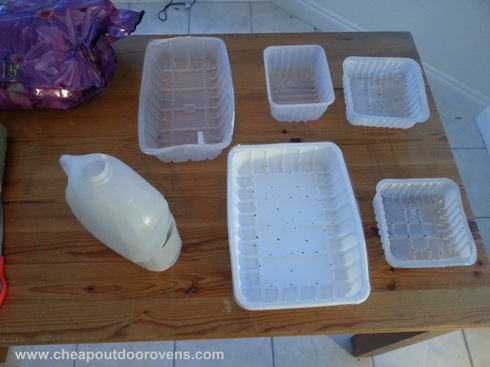
2. As above, but cut a large plastic milk bottle in half leaving a hinge to close up after sowing seeds to create a mini green house.
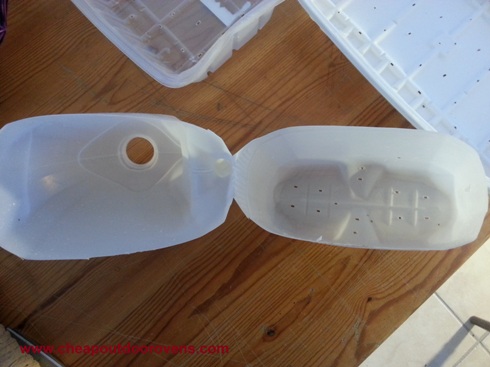
3. Fill trays or bottles with compost. Sow seeds to a depth suggested on pkt. Water then cover with clear or opaque plastic bag or sheet of glass or anything else, you get the idea, to keep moisture in and heat up the soil.
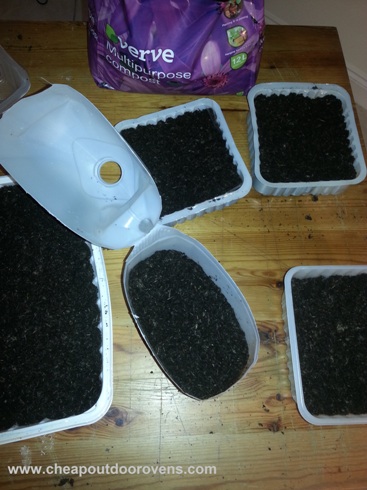
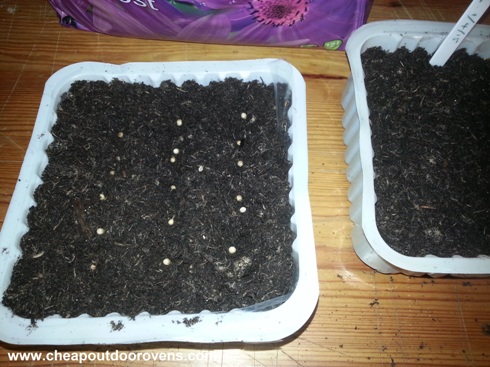
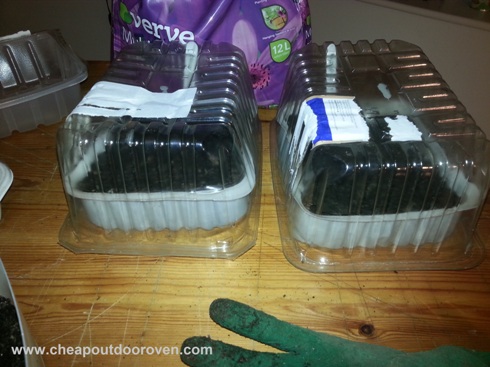
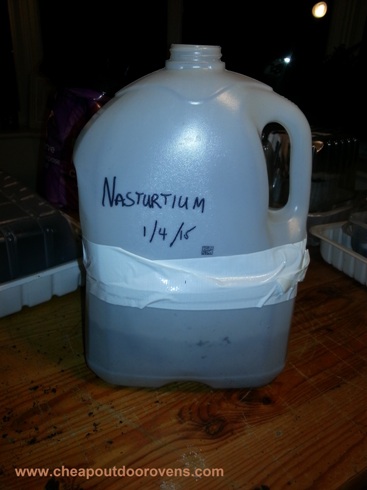

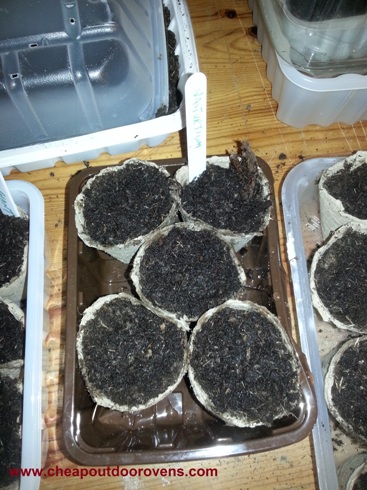
A Raised Herb bed
This is a simple way to keep your culinary herbs just out of reach from damage, also saves your back a little depending on your height. Here you can see a series of photographs showing how we planted ours, finishing with protection from cats (we hope). As we seem to be the only property without a resident cat, they all like to come to a neutral territory and use our beautifully tilled soil as a latrine! The smell of my brother-in-law's dog makes no difference; I just hope there are no fat cats to snap the trellis as I don't think weld-mesh will look anywhere near as pleasing to the eye. I know I could use spiky pruning from pyracantha and hawthorn or such like, laid on top of the soil between the herbs, but I'm not a sadist.
1. Clear and dig over the bed, turning the soil whilst adding a little fresh supply of organic matter to improve drainage and encourage new roots to reach out.
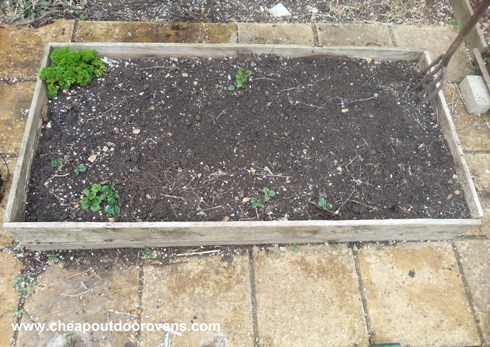
2. Place your already established perennial herbs out, leaving spaces for your annual and biennial herbs to go in later on in the season. Some of the roots may be congested, so to encourage them to establish, use a hand fork and tease out the roots. Don't worry about damaging the plant, just make sure you hold the root ball and not the foliage to avoid snapping.
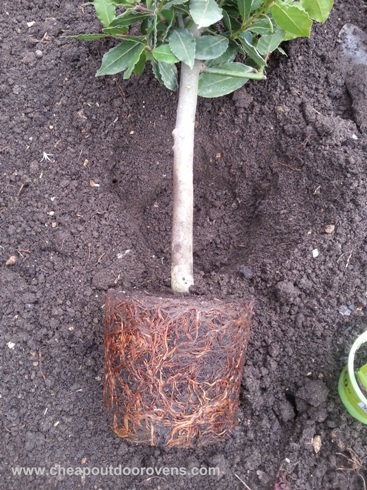
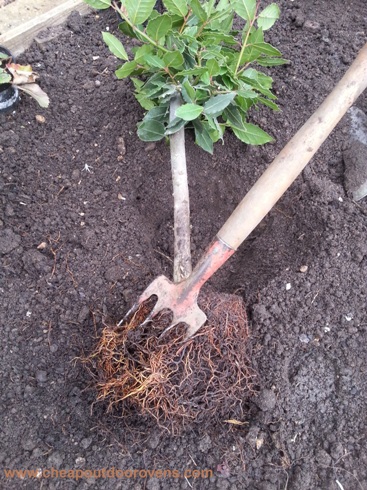
3. For invasive plants like mint and chives, use a larger sized pot as a barrier and cut the bottom off to create a collar.

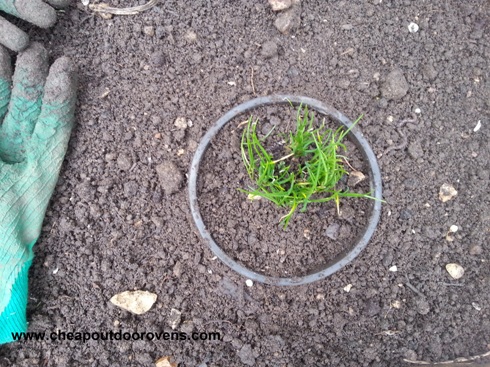
4. If you have a problem with your cat or neighbours' cats using your borders as kitty litter trays, you can try this guilt free defence of wooden trellis. I cut a section out to go over the taller bay and just pulled the low growing herb's foliage through. When it comes to planting the perrennial herbs out I'll just cut out more smaller sections. Support in place with bricks and the herbs should grow to disguise them.
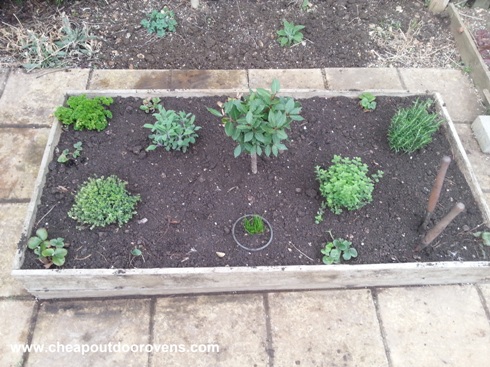
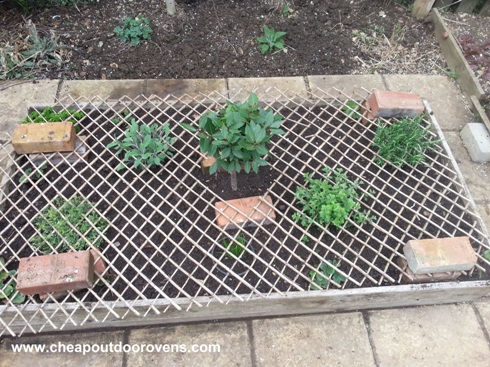
Happy planting!












